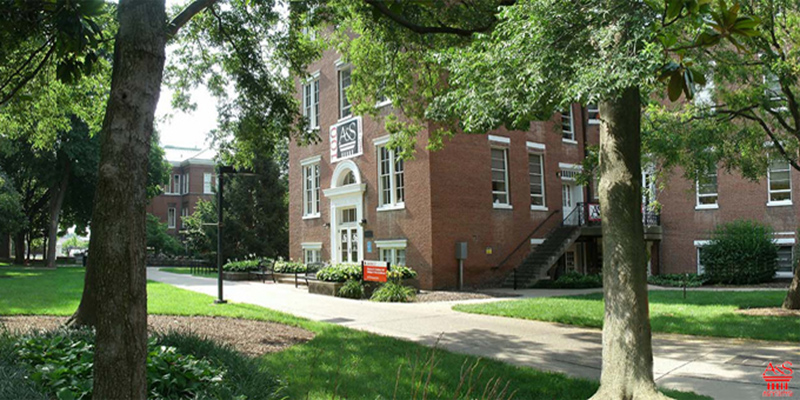A&S advisors introduce social media strategy to engage students
College of Arts & Sciences undergraduate academic advisors Bret Hirsch and Eddie Bobbitt recently created a new social media and engagement strategy to encourage advisors and students to stay in touch on campus, and online. The pair presented their idea, “Hashtags to High Fives,” at the National Academic Advising Association’s (NACADA) annual national conference. The presentation detailed thirty ways to promote student engagement. NACADA held its national conference in Atlanta from October 5 through 8. Bret and Eddie were asked to present their program after presenting at a regional conference earlier this year.
“Hashtags to High Fives” focuses on four areas of student engagement:
- Rapport development in appointments
- Utilization of social media
- Maximizing communication
- Campus partnerships/collaborations
In this Q&A we asked Bret and Eddie about their program, how it was received by other professional advisors, and how UofL’s Arts and Sciences Advising team will implement some of their techniques with students.
What is “Hashtags to High Fives?”
Bret: The student population we serve is very different than it was five or ten years ago. With the explosion of social media and student communication styles, as professionals we have to adapt our techniques to keep up! “Hashtags to High Fives” works to help empower advisors to take on new techniques or methods of communication to connect with this population.
Eddie: Hashtags to High-Fives is a 60-90 minute professional development opportunity for student affairs professionals. Our presentation/workshop focuses on creative yet affordable ways to engage students.
How did you come up with this concept for advising?
Bret: We were talking about submitting a proposal to present at a regional conference and thinking about what we do well. It also fills a gap that advisors around the country seem to struggle with, so it was a good fit!
Eddie: Back in April, Bret and I were brainstorming ideas to present. We wanted to do something that was high in energy but provided attendees with things that they could take back with them to their campus.
What need does “Hashtags to High Fives” fill in student development?
Don’t ask a student to be engaged in their education if you’re not going to be engaged in your profession. Eddie Bobbitt
Bret: Getting students engaged with their advisor! If students see their advisor as human and someone who cares about them, they are more likely to reach out. It also provides great techniques for engaging students in emails, social media, or in a freshman experience course.
Eddie: It’s fun and practical. Student engagement directly impacts student retention and retention is always an issue in higher education.
NACADA was last week. Reflecting on your presentation how did other professional advisors relate to “Hashtags to High Fives?” What was their feedback?
Bret: It was very well received! We had nearly 500 advisors from as close as Indiana University Southeast to as far as the United Arab Emirates and Nigeria attend our session with overwhelmingly positive comments and a renewed excitement for working with students. A number of them have already started working to implement new things on their campuses and the Twitter comments have been encouraging.
Eddie: The feedback has been incredibly encouraging. The #2Hi5 and #2Hi5s on Twitter has had tremendous movement (see Twitter feed below). We’ve received multiple emails from colleagues in the field indicating that it was the best session they have ever attended at a NACADA conference.
Why should other professional advisors and faculty use these techniques in dealing with students?
Bret: We start every presentation by making the statement, "not all of these methods work for everybody." The research shows that students who are connected with at least one person on campus are retained and persist to graduation. We want to be sure our students have that person. Most of the techniques are simple changes and really do benefit our students.
Eddie: It might sound corny, but I think the whole idea of our session is to remember why we do what we do. It’s easy to become robotic in the day in and day out stress in the office. We are all in the profession because we care about the success of our students. We want to be here for them in this transformative chapter of their lives. Our session just reinforces the need to connect with your students so that you can ultimately be the best student affair professional you can be.
Do you have plans to implement this in A&S advising? How will you do that?
Bret: A number of things have already started. We have increased our presence on social media, advisors have philosophy statements, we are advising in the residence halls, and our text messaging service is active. While there are still some things to go unit wide, we are getting there!
Eddie: We do hope to move the workshop to a podcast at the beginning of the new year. We are also in the process of publishing a few articles and doing a webinar for NACADA.
Here are some top Tweets from NACADA about #2Hi5
#2hi5 Tweets
